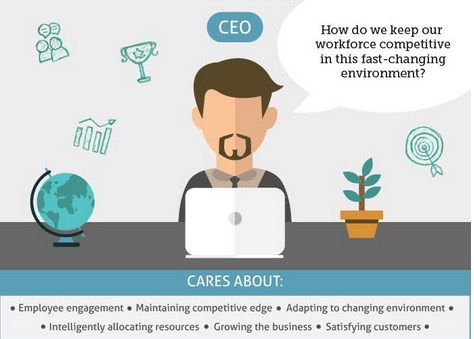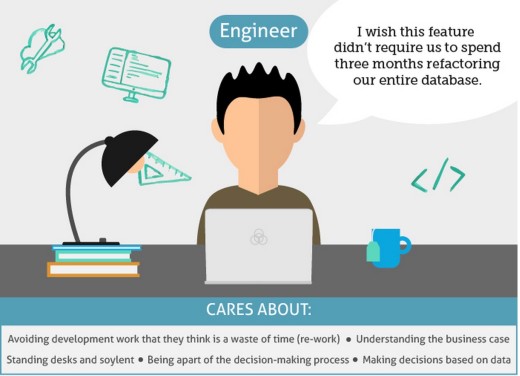
A recent article in the New York Observer detailed the complications with introducing lean methodologies, such as experimentation, to large organizations. One of the quotes from the article I found intriguing was a remark from a Fortune 500 executive after sitting through a lean workshop: “[Lean] may work well for a startup, but we have 75 years of established processes in place.”
This is a common sentiment I’ve come across. Daniel Zacarias, the Lisbon-based author of the excellent product management blog Folding Burritos, elaborated to me in an email:
I’ve mostly worked on digital products for non-digital companies. In these organizations, experimentation is often a very alien concept and a tough sell to most stakeholders. The initial reaction is usually some form of “That sounds interesting, but expensive. We should instead do it this way which I think is best.” This is the classic default to an opinion-based approach.
So how do product managers overcome this to not only get the necessary buy-in for experimentation, but also the enthusiasm and support of key stakeholders? I think the answer is to simply replicate what we’re already doing in other areas of the craft.
It’s widely agreed that one of the most important skills for product managers to possess is empathy. While we normally think about this skill in terms of gaining a deeper understanding and appreciation of the user’s perspective, it may also be the key to convince the gatekeepers and stakeholders at your organization of the value of experimentation.
Instead of being frustrated by internal politics, it’s worth taking a moment and considering what each person’s reasonable objections to and notions about experimentation might be. Only then can you develop a response that gets through to them.
Speaking about the challenge of overcoming internal politics, Helen Bui, a former VP of Innovation at News Corp, echoed this strategy on the podcast, This is Product Management. She said:
What’s interesting about communication is it’s different for every person. Just because you communicate one way doesn’t mean it’s going to work for everyone. Tailor your message to your audience. That’s something that people in soft skills-driven roles learn to do very early on. It isn’t a one-size-fits all world so you have to be dynamic.
On that note, I’ve worked with MindGrub’s Director of Creative Strategy, Leah Vogely, to compile common mindsets among the primary stakeholders who need to buy-into and/or practice experimentation. We’ve also included a few tips for how to approach each of them individually.
It’s important to note that you don’t need to evangelize every person to the same degree – some may need to work with you day-to-day while others merely need to understand conceptually why experimentation is important. Making this distinction can be the difference when making the case.

Although it’s not typically the CEO’s job to execute experiments on a day-to-day basis, the CEO sets the tone for the organization in terms of hiring, long-term objectives, acceptable behavior, and strategic investments. Therefore, it’s important to explain the benefits of experimentation in terms they’ll find instrumental.
It’s surprisingly easy to get insulated from market demands, even when it seems all is going well. Experimentation keeps challenging the organization’s assumptions and gives employees a deeper understanding of their customers in order to uncover insights and opportunities to expand revenue.
Not only that, but experimentation circumvents the ‘cover-your-ass’ mentality that keeps many employees at large organizations from pursuing creative ideas and risks. Lean methodologies help to-derisk those activities, enabling teamwork and collaboration, and yielding more engaged employees.

You might be surprised to find CFOs on this list because they don’t often come up in discussions about adopting lean methodologies. But don’t underestimate the significance of their role – the CFO is focused on mitigating the risk of executing on the organization’s vision.
A particular problem that has repeatedly arisen is the complicated process for budgeting for and procuring experimentation tools and services. Unlike many other line items, experimentation does not have a clear revenue outcome or expectation (beyond ‘learning’).
It’s important to clarify to the CFO that every idea and product has assumptions that eventually need to be tested. They can be tested after spending vast sums to build and launch a product in the market, or they can be tested beforehand. Experimentation fundamentally moves that process of testing assumptions before building anything, helping product teams mitigate risk and costs, and help them build more profitable products.

Experimentation and design thinking share many similar concepts like iteration and user feedback, so designers conceptually buy-into the concept. Some challenges arise however in cases when designers are too focused on the quality of their work and crafting pixel-perfect designs rather than generating user feedback.
In these instances, make sure to get the designer involved far earlier in the concept testing process before ownership of creative becomes a problem. Then focus on how experimentation is a capability and tool to rapidly evaluate their prototypes in order to make later designs awesome for users.

Developers are by nature data-driven so validating assumptions with data is intuitive to them. However, they don’t like to waste time on features that customers don’t care about, so it’s important to have them understand how the experimentation process collectively brings the team closer to understanding and solving the end use case.

Like developers and designers, researchers are natural champions of the experimentation mantra. However, researchers occasionally disagree with product managers regarding the necessary rigor by which user testing needs to be structured and evaluated.
They tend to advocate for large sample sizes and higher confidence levels which can marginalize the role of in-person interviews and quick surveys. Instead of ignoring these concerns, you should brush up on some of the fundamentals of statistics so you can speak their language and collaborate to create research structures that are rigorous and aligned with business constraints.

Most product managers probably wouldn’t have expected to see the sales manager persona on this list but I’d argue they’re one of the most important. Pre-selling to gauge feedback on product concepts is one of the most effective experimentation techniques, so getting buy-in from sales managers is critical. Work with them to understand how experimentation helps product teams out-innovate competitors on key features so that sales teams can sell more.
Getting started
Miscommunication holds back so many product teams from implementing the methodologies they need to be successful. By understanding and empathizing each stakeholder at your organization, you can craft messaging that aligns experimentation with achieving their objectives.
Read Next: This AI experiment generates realistic handwriting: Bring on the identity stealing robots
Image credit: Shutterstock
Get the TNW newsletter
Get the most important tech news in your inbox each week.





